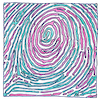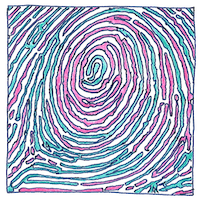Nehemiah Grew
biometrics

|
Fingerprint
People had noticed patterns on the fingertips. Babylonians pressed fingers into clay as signatures on legal documents. Nehemiah Grew put them under a microscope and wrote in 1684 the first scientific description of the patterns of ridges on fingers and palms.
Dactyloscopy
Pudd’nhead Wilson and Sherlock Holmes caught their perpetrators, but Scottish police falsely accused detective Shirley McKie based on a fingerprint at the scene of the crime. Patterns of friction ridges on your fingertips, your palms, and the soles of your feet, no two alike, uniquely identify you to the CIA, FBI, and your local police.
Loop, whorl, and arch
Loops, whorls, and arches swirl like van Gogh’s Starry Night, but the chaos has been classified and reduced to a number for easy filing. This line of reasoning, emphasizing efficiency and consistency, dessicates reality to where idiots can follow procedures and artists despair.



Introduction of biometrics has proceeded slowly. Fingerprinting has been used for tracking criminals; it is not widely accepted that everyone should be fingerprinted. Token-based and knowledge-based identification systems have not raised the same privacy issues and fears of authoritarian control, although I have known people who did not want their children to be issued social security numbers.
See also in The book of science:
Readings in wikipedia: